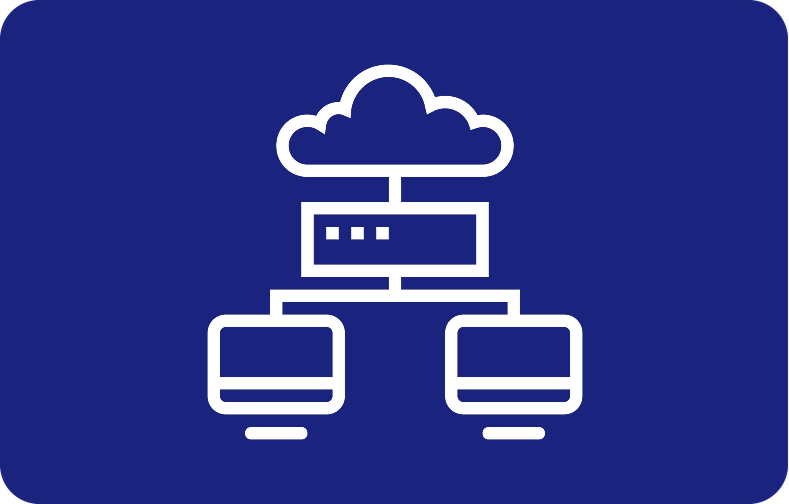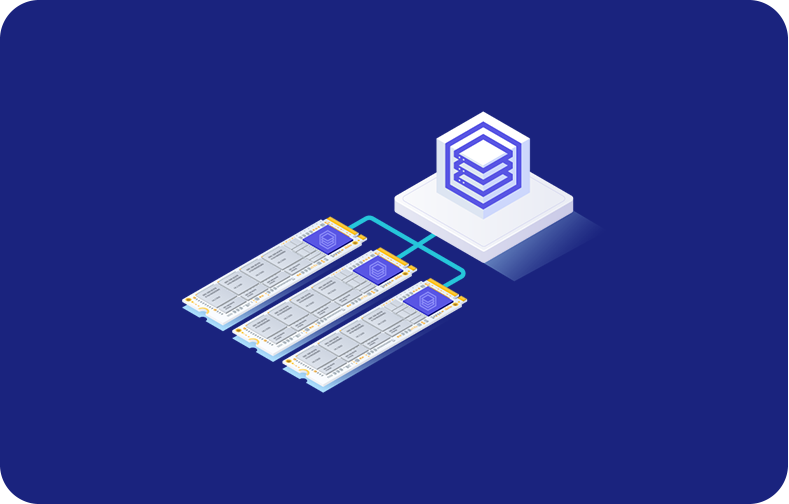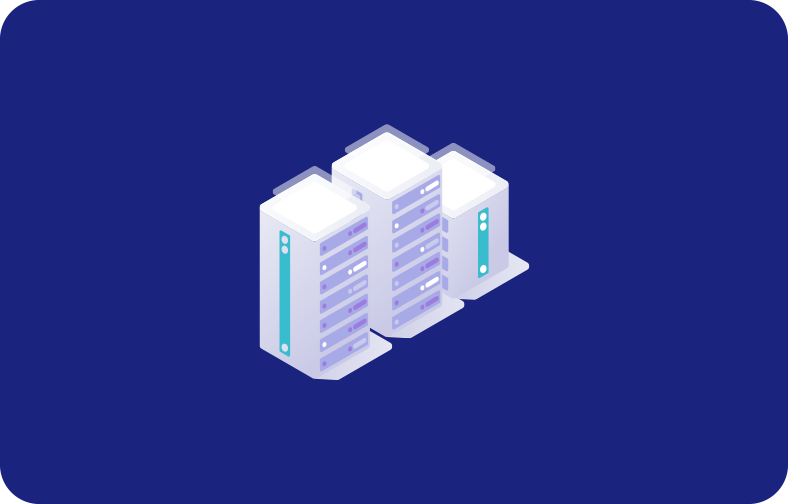Understanding Web Server Architecture Options: What Every Tech Pro Needs to Know

Understanding web server architecture is critical for all businesses or individuals reliant on digital platforms. Your server's design directly determines whether your site delivers lightning-fast performance or frustrates users with slow loading times, whether it stays online during traffic spikes or crashes when you need it most. Smart architecture choices deliver measurable results: reduced downtime, bulletproof security, and seamless user experiences that drive customer retention and revenue growth.
This guide breaks down web server architecture fundamentals, demystifies its inner workings, and equips you with the knowledge to make informed decisions about your web infrastructure.
What is web server architecture?
Web server architecture is the structured framework that determines how servers manage, process, and deliver web content to end-users. It's essentially the blueprint behind how your website or application responds to user requests, organizes data flow, and ensures smooth, reliable interactions.
Think of it like the foundational infrastructure of a building: if it's well-designed, the entire structure can efficiently handle heavy traffic, growth, and unexpected stress. If not, the foundations will crumble and the stability of your assets are at risk.
A robust setup for web application development requires the coordination of various elements, including web servers, database servers, application software, middleware, and protocols, to create the architecture for effective data management.
Here's how everything works: Web servers process incoming requests. Databases store and retrieve data. Middleware connects different software components seamlessly, while network protocols standardize communication. Collectively, these elements ensure your online services remain consistently accessible, secure, and with high latency.
Proper web server structure is critical in situations where users expect rapid load times, near-zero downtime, and secure data transactions.
Defining the terms: 5 key concepts you must know
Before diving deeper into web server architecture, let's clearly define five essential terms.
-
Scalability and performance
Scalability refers to a web server's capability to handle increasing loads effectively without sacrificing performance. Scalability can be horizontal—adding more servers—or vertical—increasing the resources (CPU, RAM) of existing servers. Choosing the right scaling method significantly impacts performance and cost-efficiency.
-
Virtual private server (VPS)
A VPS is a virtualized server environment that provides dedicated resources on a shared physical server. This arrangement balances cost-efficiency and performance, offering greater flexibility, reliability, and control compared to shared hosting.
-
Middleware
Middleware is software that acts as a bridge between different applications, services, and components. It simplifies data management and ensures smooth communication within the architecture. Middleware plays a critical role in integrating disparate systems seamlessly.
-
Web server software
This is the software responsible for managing incoming HTTP requests and delivering web pages. Popular options include Apache and NGINX, each having distinct strengths regarding performance, flexibility, and resource usage.
-
Web framework
Your web framework provides pre-built tools, libraries, and components for developing and deploying web applications. Frameworks like Django and Laravel streamline development by standardizing processes, protecting sensitive data, and building web applications that can scale easily.
What are the 4 types of web servers?

Web servers come in several forms, each designed to meet specific needs, traffic demands, and use cases. Here are the four primary types of web servers:
-
Apache HTTP Server
Apache is a widely used, open-source web server software known for flexibility and robust module support. Apache excels in hosting dynamic content and supports extensive customization, making it ideal for websites requiring complex configurations and integrations.
-
NGINX
NGINX (pronounced "engine X") is renowned for its performance, particularly when handling large volumes of simultaneous connections. It excels at serving web requests, reverse proxying, and load balancing. NGINX is often the go-to choice for high-traffic websites and resource-intensive applications.
-
IIS (Internet Information Services)
IIS is Microsoft's proprietary web server, tightly integrated with Windows-based systems. It's particularly suited to hosting ASP.NET applications and is widely used by enterprises deeply embedded in the Microsoft technology ecosystem.
-
Litespeed
Litespeed is a lightweight, efficient server designed for speed and minimal resource consumption. It’s especially useful for serving static content rapidly, making it an excellent choice for small to medium-sized websites and applications where server resources are limited.
By understanding the strengths and limitations of your chosen web server software, you can better align your choice with specific performance needs, development stack, and scalability plans, ensuring optimal ROI from their web hosting infrastructure.
What are the 3 components of a web server?
Web servers function through three essential components working in harmony: the physical hardware, operating system, and web server software. Each piece handles a distinct job, but they're completely dependent on each other, like musicians in a band. Taking away one instrument would ruin the performance.

The hardware provides the physical or virtual infrastructure that hosts applications and data.
On top of this foundation, the operating system acts as an intermediary, managing hardware resources and facilitating communication between the hardware and applications.
Finally, the web server software directly handles requests from users, processes them, and serves the required content. A balanced interaction between these three elements ensures optimal performance, reliability, and security.
-
Hardware
The hardware component includes physical or virtual resources—such as CPUs, RAM, storage, and networking equipment—required to host and serve web content. Robust hardware ensures optimal performance, reliability, and scalability.
-
Operating system (OS)
The OS serves as the foundational software layer, managing hardware resources and facilitating communication between the server hardware and applications. Common server operating systems include Linux (preferred for flexibility and security) and Windows Server (integrated seamlessly with Microsoft products and services). Selecting the right OS influences system stability, performance, security, and compatibility with your technology stack.
-
Web server software
Web server software handles HTTP requests, processes them, and delivers web pages and content to end-users. Popular options include Apache and NGINX, each offering unique benefits: Apache is highly configurable, ideal for complex, dynamic sites, while NGINX excels in performance, efficiently serving static content and managing high traffic loads (compare Apache vs. NGINX).
Recognizing how these components interact enables better decisions around hardware provisioning, OS selection, and software configuration, directly influencing your web application's speed, reliability, security, and overall user experience.
What is the structure of a web server?
The structure of a web server represents how its components are organized to efficiently handle requests, manage data, and deliver web content. Typically, web server structures follow a layered approach to enhance functionality, scalability, and reliability.
At the foundational level, the hardware (physical or virtual servers) forms the base, providing essential computing resources. These resources include CPUs, RAM, storage, and network interfaces.
On top of this hardware layer sits the operating system, responsible for managing these resources and ensuring seamless integration between hardware and software.
Above the OS, the web server software processes incoming HTTP requests, determines appropriate actions, retrieves necessary content from databases or storage, and returns responses to users. Middleware software frequently operates in this layer, facilitating efficient communication between applications, services, and databases.
An effective server structure often includes additional layers like load balancers, caching servers, and security protocols.
Load balancers evenly distribute traffic across multiple servers to maintain stability and responsiveness. Complementing this process, caching servers temporarily store frequently accessed content, significantly improving performance.
The line through all these elements is the built-in security layers (such as firewalls and encryption protocols) that protect data integrity and safeguard against cyber threats.
When strategically designed, the layered structure of web servers can reduce server load and maximize uptime.
Innovations in web server architecture
Modern web infrastructure continually evolves, driven by the growing demands of online services, increasing traffic, and heightened expectations for speed, reliability, and security. Here are several key innovations reshaping how servers operate today:
Microservices architecture
Microservices have transformed web architecture by breaking large, monolithic applications into small, independent modules. Each microservice handles a specific function, making updates, scaling, and fault isolation simpler. For instance, Netflix famously transitioned to microservices, significantly improving uptime and accelerating feature deployments.
Containerization
Technologies such as Docker and Kubernetes have popularized containerization, providing isolated, lightweight environments for applications. Containerization ensures consistency across development, testing, and production environments, enhancing portability and simplifying scalability while drastically reducing deployment complexity.
Enhanced client-side processing
Modern web application architecture is shifting a substantial portion of the workload from the server to the end-user's browser. Instead of the server generating and sending a fully rendered webpage for every interaction, the client's browser leverages browser-based scripts (primarily JavaScript frameworks like React, Angular, and Vue.js) to enable real-time rendering and dynamic content updates. Upon the initiation of client requests from a web application, the server often delivers a minimal HTML shell and the necessary JavaScript bundles. The client's browser then takes over, executing the code to fetch data, build the user interface, and handle subsequent interactions without requiring constant round-trips to the server.
Edge computing and CDN integration
Edge computing brings processing and content delivery closer to users, reducing latency and significantly enhancing performance. By integrating content delivery networks (CDNs), businesses ensure content loads rapidly worldwide, improving user experiences and reducing overall infrastructure strain.
Flexible scaling and load balancing
With recent advancements in horizontal and vertical scaling, organizations can, depending on their cloud provider, dynamically adjust resources to accommodate traffic demands and workload fluctuations. Hybrid scaling methods, combining horizontal and vertical scaling strategies, optimize both cost-effectiveness and performance.
Embracing these innovations empowers organizations to build more resilient, scalable, and efficient web architectures, positioning them ahead of competitors and delivering superior user experiences.
Conclusion
Understanding web server architecture might sound like a job for IT pros, but it's about grasping how core functionality translates into real-world performance for your applications. Whether you're choosing between Apache's flexibility, Nginx's speed, IIS's Windows integration, or LiteSpeed's efficiency, the right decision depends on how well each option aligns with your specific web application architecture needs. The choices you make here directly determine how your site handles incoming requests, how secure your private data remains, and how gracefully your system handles user growth or sudden spikes in demand.










 (1).png)

